Lunchtime, somewhere in Trastevere, Rome.
The lard is sizzling in the pan, wine is poured by bartenders and the delicious aroma of slow cooked lamb fills the air.
Roman cuisine is all about strong flavours and generous portions, with nutritionally-heavy dishes. This is a cuisine shaped by the poor people, the result of a culinary tradition that had to do its best with the few ingredients available.
This explains why Romans love offals and why they are so proud of the products of their own countryside.
We have shortlisted the 10 traditional dishes to try when in Rome, the real unmissable classics.
Do you want to know what to eat in Rome?
Follow us in our Roman trip and discover the pasta staples, the Jewish heritage that still echoes in the city and the dishes created from the butcher leftovers

10. Coda alla vaccinara

Coda alla vaccinara (literally "Roman-style braised oxtails") is one of the most iconic dishes in Rome, almost exclusively found here.
Thanks to the slow cooking, the succulent and tender meat will fall off the bone and melt in your mouth, while you can soak the bread in the thick tomato sauce accompanying the meat.
The traditional basic ingredients are four: oxtail, tomato sauce, bitter cocoa and celery (sellero, as called by the Romans).
From this base, Roman chefs tends to create their own variations based on personal taste and family recipes: every self-respecting restaurant will present its version of the coda alla vaccinara, and they all taste amazing.
This humble dish was born in the Regola district, a popular neighbourhood in central Rome hosting the vaccinari (the slaughterhouse workers). The vaccinari were often paid in "meat leftovers" rather than money, so their families had to be resourceful and create dishes with what was available.
The tail meat and its tomato sauce go beautifully with the rigatoni pasta, so if you want to soften the strong flavour of the meat, you can order the oxtail with pasta.
Don't forget that with this dish it's easy to get dirty, so get your napkin ready and dig in!
9. Bucatini all’amatriciana
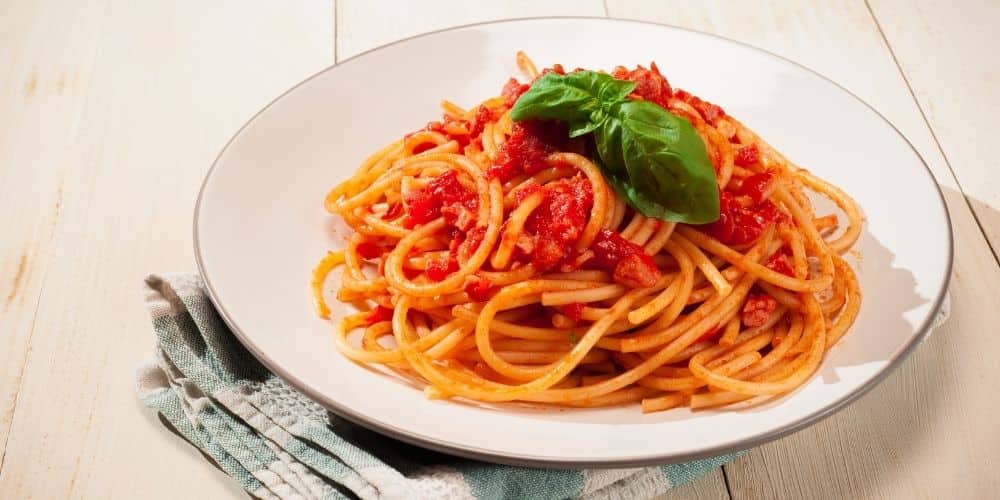
The Bucatini all’amatriciana is a pasta staple in Rome, present in every menu and adored by Romans and tourists alike.
Similar to spaghetti, the bucatini are a long and hollow pasta that perfectly picks up this tasty sauce made of San Marzano tomatoes, Pecorino Romano cheese and crunchy guanciale from Amatrice (cured pork cheek).
Simple and flavourful, the bucatini all'amatriciana is an inexpensive dish, perfect for lunch in combination with a light red wine that cuts through the fattiness of guanciale (like a Montepulciano).
The history of the amatriciana is closely linked to that of its ancestor, the pasta alla gricia. The two recipes are identical but for one detail: the gricia doesn't have any tomato sauce.
The gricia was first made in the area between Lazio and Abruzzo, in small villages such as that of Amatrice (near Rieti in the northeast of Lazio). The locals updated the recipe by adding the tomato sauce as soon as it became available, creating the current amatriciana.
The pasta was later brought to Rome by the shepherds during the annual sheep transhumance and also by the many cooks working in Rome, but native to the city of Amatrice.
In this way the word matriciano (meaning "from Amatrice") became synonymous with "restaurateur", and hence the specialty of that region took its final name: amatriciana.
8. Saltimbocca alla romana

The saltimbocca alla romana is another classic of the Roman cuisine.
The name literally means a "Roman-style jump in the mouth".
The meat used for this dish is veal, very common in Italy. The juicy slices of veal are cooked in butter and topped with a slice of parma ham and a large sage leaf, with a toothpick holding together the three ingredients.
Simple, light and delicious, with its unmistakable sage aroma, the saltimbocca are one of the most popular Italian dishes abroad.
Today the saltimbocca are considered part of the Roman tradition, but this dish is thought to be invented near Brescia, in Lombardy.
We recommend ordering them with a quintessential Roman side like the puntarelle salad (the "insalata di puntarelle", that you can appreciate below).
7. Puntarelle con salsa di alici
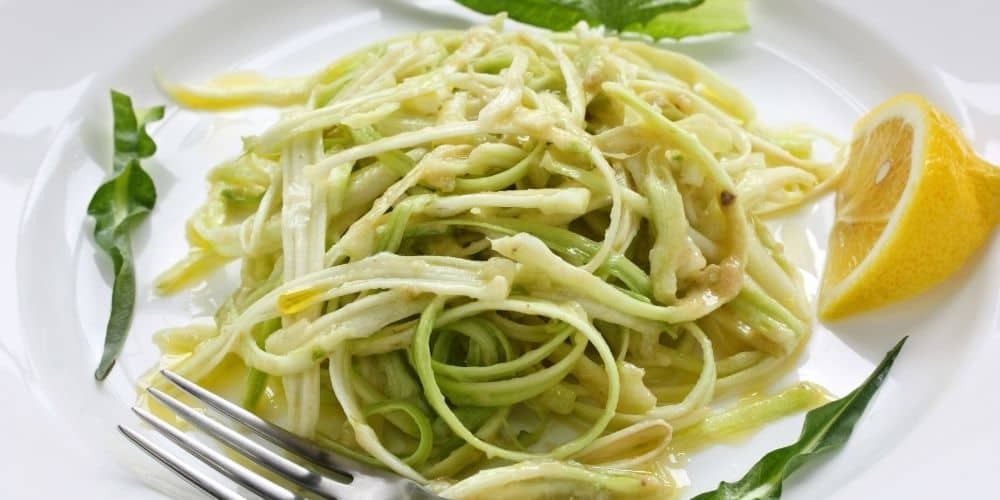
The puntarelle alla romana is the standard Roman side dish, a perfect combination with any meaty main course.
The puntarelle are shoots from the chicory family called Cicoria Catalogna. This vegetable has a distinctive strong and slightly bitter flavour and it's packed with loads of nutrients (especially vitamins and mineral salts), making it a favourite side for the locals.
Coming straight from the countryside near Rome, this can be considered the classic 0 km food.
The puntarelle leaves are cut very thin and served raw with a dressing of oil, garlic and anchovies.
The final result is a crunchy salad that’s perfect for digesting heavier meaty courses.
6. Tonnarelli cacio e pepe

The mighty tonnarello pasta and the creamy cacio & pepe sauce are - simply put - a match made in heaven.
This is one of the most traditional dishes of the Roman culinary tradition, and one of the simplest, requiring just a few ingredients: pasta, pecorino cheese (the "cacio") and pepper.
The tonnarelli are an egg pasta resembling a rather thick, square spaghetti, porous enough to soak up the delicious pecorino cream.
The history of this recipe is connected to the movements of shepherds between Lazio, Umbria and Abruzzo, looking for the best seasonal grazing for the herds. During their travels, they needed ingredients that were easy to find and even easier to cook: spaghetti, pepper and seasoned cheese.
And just like that, the necessity for an easy and filling dish... became an unmissable, top-notch specialty.
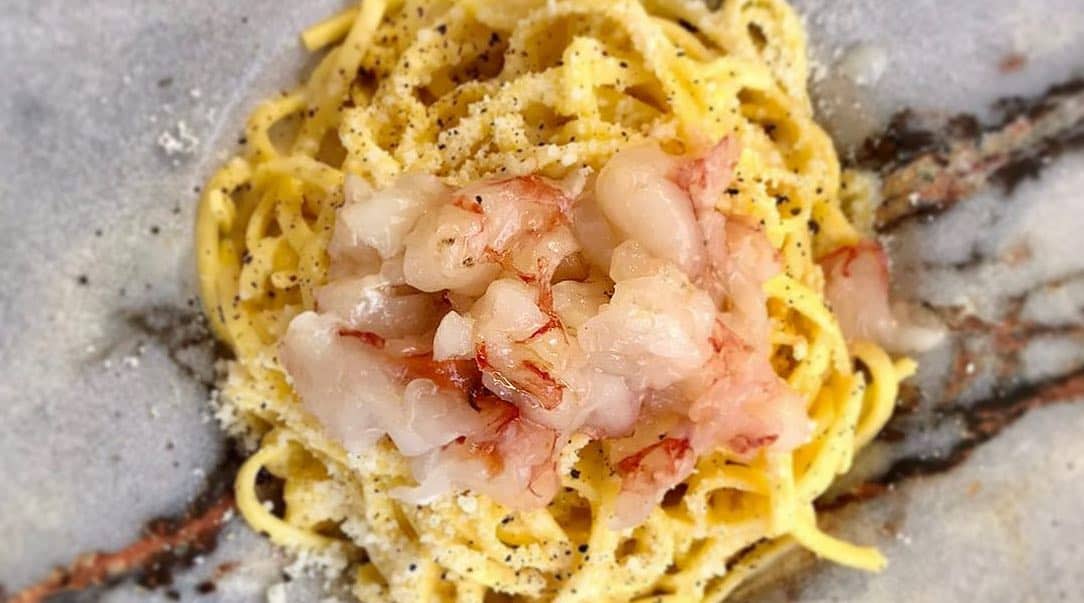
Tonnarelli cacio e pepe with prawns, lime and mint by Giordi.
Rome is also creativity and inspiration. In the Capital, you can find interesting variations alongside traditional recipes.
For example, if you want to try an original cacio & pepe, we recommend booking a table at Giordi in Campo de' Fiori, in the heart of Rome. Giordi is a restaurant where Roman tradition and creativity mix up, creating a delicious result.
On top of the classic cheese and pepper, Giordi's tonnarelli are garnished with raw prawns marinated in lime and a touch of mint, a great classic of Roman herbs.
A delicate and interesting dish to enjoy while sipping a refreshing gin & tonic, enjoying the lively atmosphere of Campo de' Fiori from Giordi's outdoor tables.
Discover the full original menu by Giordi.5. Supplì
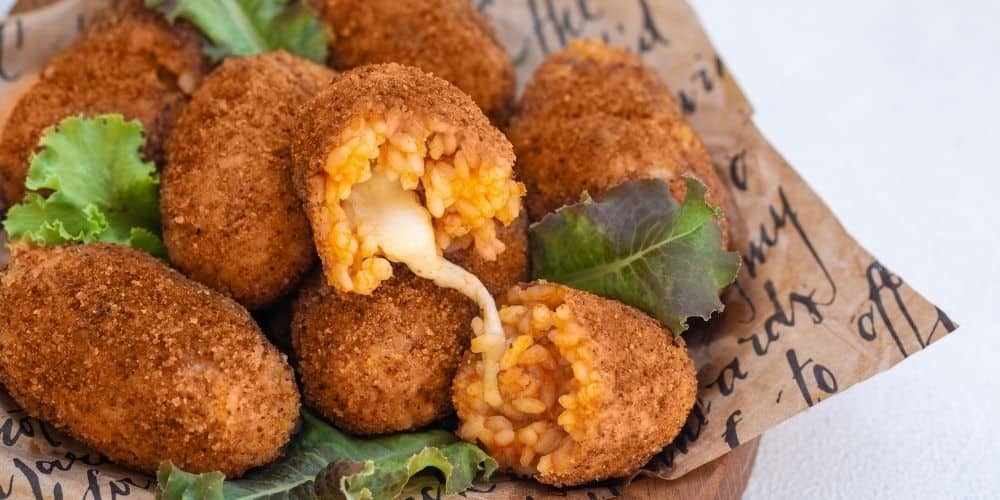
Supplì is the king of Roman street food.
The supplì are fried meatballs stuffed with rice in ragù sauce, with a hearth of melted mozzarella in the center.
Tradition claims that in the early 19th century, a French soldier stationed in Rome ate these fried balls and was caught by surprise by the melted mozzarella hearth. He defined that delight as a “surprise” (adapted in Italian as supplì directly from the French).
They are called in jargon "telephone supplì", because if you break the fried ball in half, the string of melted mozzarella looks like a telephone cable connecting the two handsets: that's Italian sense of humour applied to food.
This specialty can be found everywhere in Rome, but it's rare to find in northern Italy. The supplì has two southern cousins: the Sicilian arancino and the Campania rice ball.
The fast foods in Rome offers many variations of the supplì, for example with tasty carbonara or amatriciana filling, but always keeping rice as the main ingredient and the irresistible crunchiness of the outer shell.
If you are craving for a quick Roman lunch, get a square of margherita pizza and a supplì and enjoy them while strolling in the Eternal City.
Check out our article about "The 5 tastiest street foods in Rome" to know more.
4. Trippa alla romana
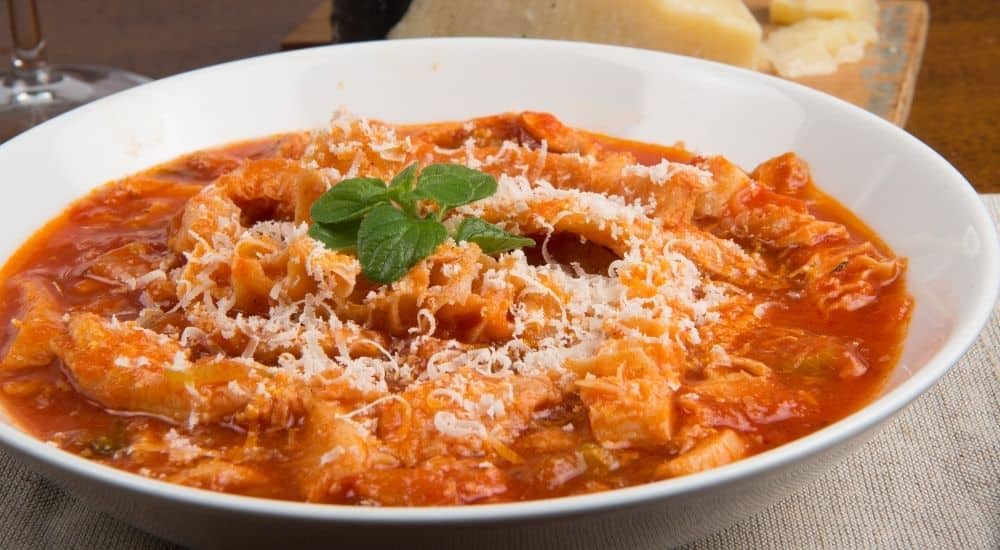
"Thursday gnocchi, Friday fish, Saturday tripe".
This old Roman saying tells a lot about the past of the Capital and the eating habits of the poor: a rich lunch on Thursday, a light meal on Friday, ending on Saturday when you could buy tripe from the butchers, who slaughtered the beef for the Sunday meal of the rich.
The trippa is obtained from different parts of the bovine pre-stomachs and belongs to the famous quinto quarto (the "fifth quarter"). The fifth quarter is the least valuable part of the animal: the other four quarters (two fronts and two rears) were in fact a delicacy for the nobility and the clergy.
In the traditional recipe, the tripe is cut into strips and cooked with plenty of tomato, onion, pecorino romano, white wine and mint (the queen of Roman herbs).
The result is a delicious dish, also present in slightly different versions in other cuisines in central Italy.
Rich in protein and low in fat (less than 5%), Roman-style tripe became a famous dish outside of Rome also thanks to the actress Elena Fabrizi, sister of the comedian Aldo Fabrizi, and known by the name of Sora Lella.
Even today, in the trattorias of Rome you’ll find a sign reading "Sabato Trippa": follow your instinct (and smell) and order a generous portion, you won'tregret it.
3. Abbacchio alla scottadito

Lamb meat ready to grill for "abbacchio alla scottadito".
The roasted “abbacchio” (the baby spring lamb) is the cornerstone of the Easter cuisine in Rome.
According to the baseline recipe, the exquisite lamb chops are marinated, greased with lard and then cooked on the grill, before being eaten hot to preserve the tenderness of the meat.
The name "abbacchio alla scottadito" literally translates as “finger-burning” lamb chops, a humorous reference to the fact that this dish has to be eaten with your hands whilst still hot.
The lamb meat is usually sourced in the countryside around Rome, one of the biggest producer in Italy.
Though being an Easter dish, it generally can be enjoyed all-year round.
2. Carciofi alla giudìa
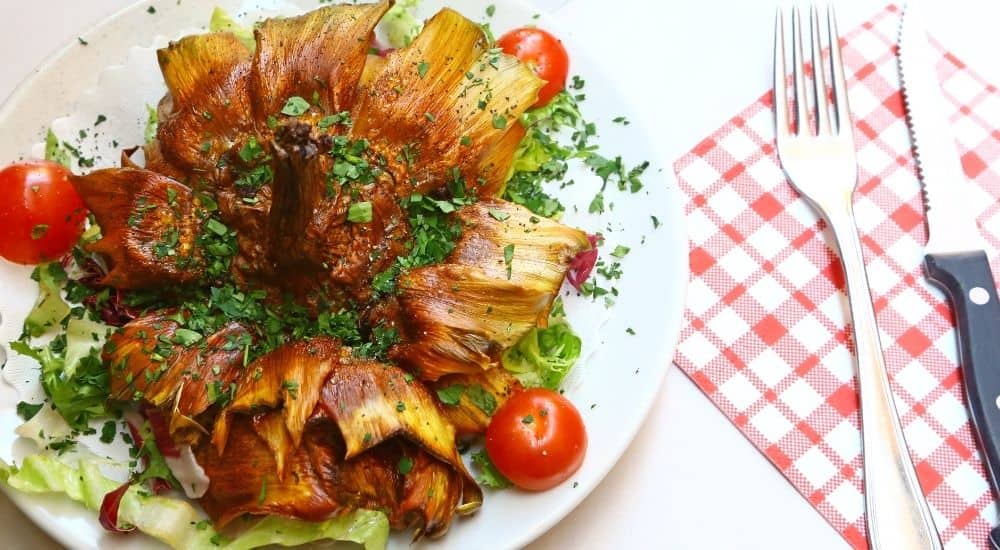
The delicious carciofi alla giudìa (or "Jewish-style artichokes") is a dish that originated in the Jewish community of Rome but is now fully embedded in the Roman cuisine.
The artichokes "alla giudìa" are beautifully presented on the plate, gold in color and irresistibly crunchy.
After marinating, the artichokes are stripped of their outer leaves and fried in olive oil, with a final splash of cold water for additional crunchiness.
For this recipe, the Roman chefs strictly use mammole (round-shaped artichokes without thorns), collected in spring in the coastal area between Ladispoli and Civitavecchia: the perfect example of 0 km food.
The origin of the recipe is indeed Jewish (in fact "giudìo" means "jew" in Roman jargon) and was brought to Rome by Jews expelled from Spain.
This dish should not be confused with another local specialty, Roman-style artichokes, which are cooked in a pan instead.
1. Spaghetti alla carbonara

The spaghetti alla carbonara are the uber-Roman dish.
The carbonara is an unmissable dish for anyone visiting Rome, present in the menus of literally ALL restaurants and adored by Romans and tourists alike.
The base of the recipe is made by just a handful of ingredients, mixed together in the right ways (and at the right times): spaghetti, guanciale, egg yolks, pecorino and freshly ground pepper.
In home cooking, the recipe of carbonara is sometimes customised with additions and personal touches (single/double cream is a firm "no" unless you want to make your Italian guest suffer).
This makes it one of the most discussed pasta dishes in Italy.
The carbonara is quite a new recipe. In fact, there is no trace of this dish in pre-World War II cookbooks.
According to cooking historians, this is the most probable origin of the recipe: in 1944 the American soldiers fighting in Italy crashed into the Nazi-Fascist troops along Gustav line (a set of fortification cutting Italy in two, extending from Lazio to Abruzzo). They were forced to stay in central Italy for months and they got to know the pasta “cacio e ova” (cheese and eggs), typical of those areas.
They used the smoked bacon of their rations to enrich the pasta, and they ended up creating a rough carbonara. Finally, they arrived in Rome and brought carbonara with them: the recipe found fertile ground to evolve and establish itself in the Capital, becoming the delicacy that today makes us lick our lips.
Honourable mention

Maritozzo brioche filled with whipped cream.
We had to leave out this list many Roman culinary delights, yet they deserve a quick honourable mention.
Rome is not famous for its desserts, but if you want to enjoy a five-star breakfast, pop into a pastry shop and order a maritozzo brioche stuffed with whipped cream.
If you love fried foods, you should definitely try the fried fiori di zucca ("pumpkin flowers") or the baccalà fritto ("fried cod fillet"), another legacy of Jewish kosher cuisine.
Last but not least try the coppiette, strips of dried pork with chilli and fennel seeds, and the gnocchi alla romana, made with milk and semolina and covered by a layer of crunchy cheese.
After lunch, start exploring Rome using the tips in our article "10 wonders to see in Rome".
The pass to visit the best attractions of Rome between meals
.jpg)
Do you want to spend a vacation in Rome to discover all its beauties and points of interest? To visit Rome in the most convenient and advantageous way, you absolutely must try the Visit Rome Pass, a tourist pass that offers you free access or significant discounts to a constellation of over 50 attractions scattered throughout the city of Rome and its surroundings.
With this pass, you can explore the city between meals, savoring the 10 traditional dishes and having an unforgettable experience. Don't miss this fantastic opportunity for a delicious journey in the Italian capital. Bon voyage and enjoy your meal!
Find out more about Visit Rome PassAbout the author
Written on 25/12/2021


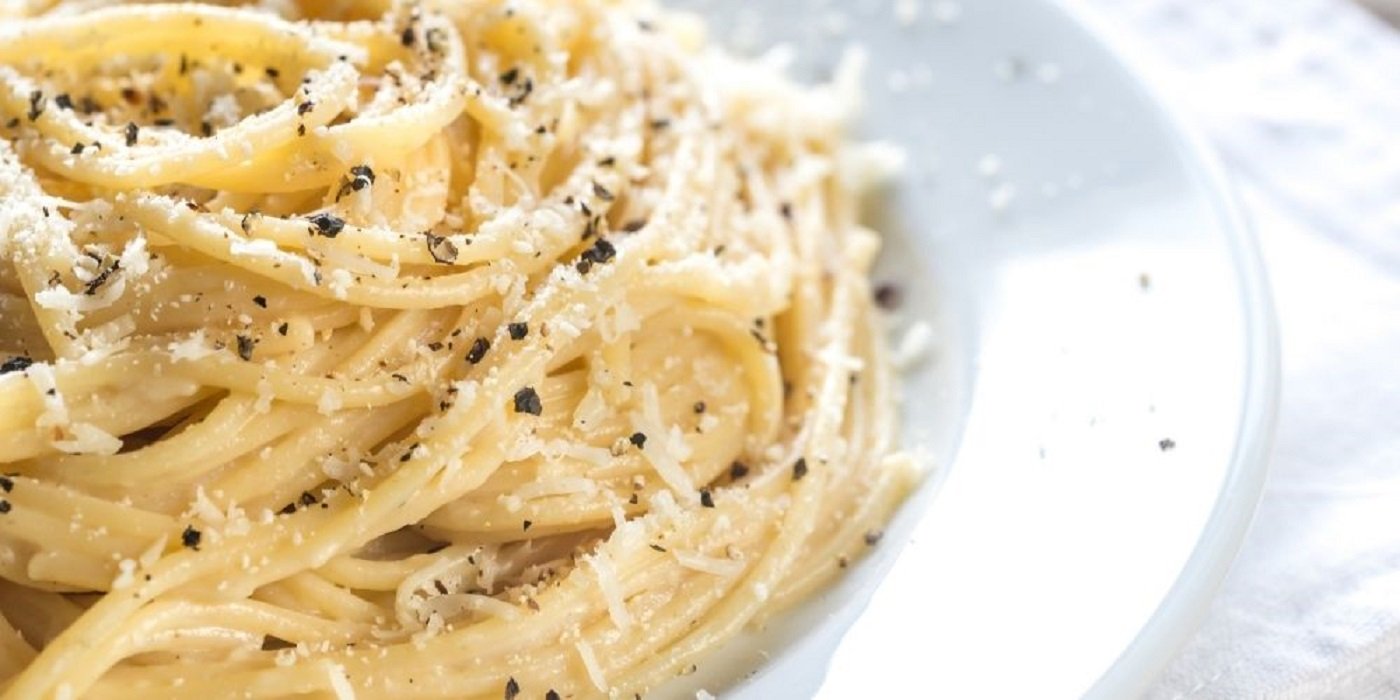

Fabrizio Mariani
Are you hungry and you're in Rome? Lucky you! It's time to get inspired by our list of 10 unmissable foods to try when in Rome.